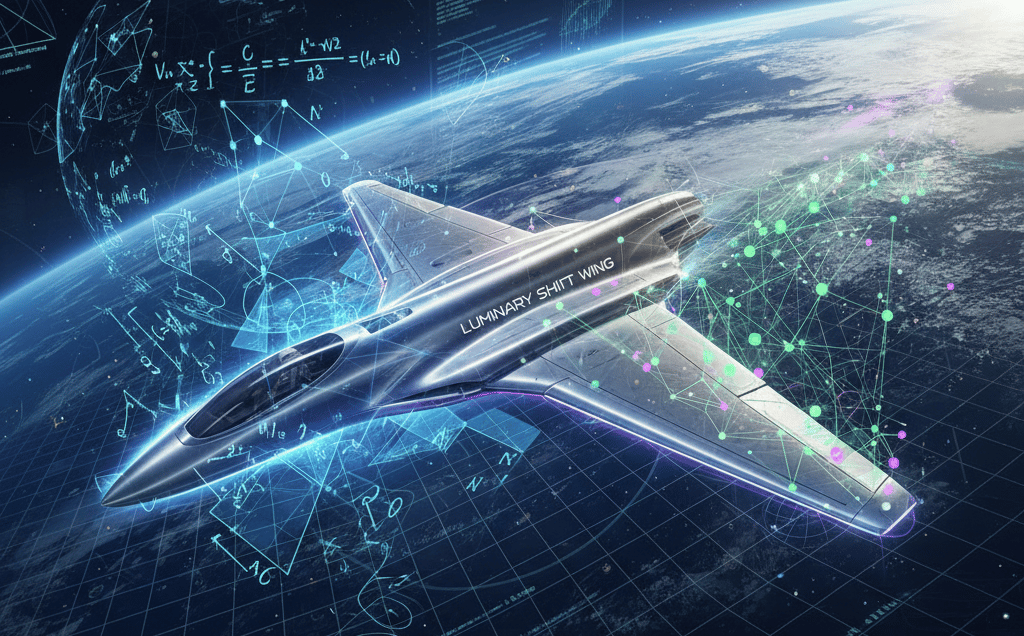Physics-Driven AI Transforms Aerospace Design Simulations
Physics-based AI models integrate scientific laws with machine learning, enabling faster, more accurate aerospace simulations for advanced design, exemplified by Luminary’s Shift Wing dataset aiding rapid concept exploration and optimization.
AITECH INFRASTRUCTUREAUTOMATIONTECHNOLOGYDIGITAL AUTOMATION
Eric Sanders
10/3/20253 min read


How Physics-Based AI Is Turbocharging Aerospace Design
In an industry where every gram of weight, every fraction of aerodynamic efficiency, and every second of development time matters, aerospace engineers have long sought ways to revolutionize design workflows. The latest breakthrough doesn’t come from traditional wind tunnels or next-gen materials alone. It’s the fusion of physics and artificial intelligence—physics-based AI models—that’s poised to transform aerospace simulations from painstaking, resource-heavy tasks into blazing-fast, incredibly accurate tools. This is not just evolution; it’s a revolution in how we conceptualize and optimize aircraft and spacecraft.
Why The Old Ways Aren’t Cutting It Anymore
If you’re in aerospace engineering or design, you know the drill. Traditional computational fluid dynamics (CFD) and other simulation methods require enormous computational power and time. They are based purely on first principles—solving complex partial differential equations that describe the physical laws of fluid flow, heat transfer, and structural mechanics. While highly accurate, these models can take anywhere from hours to days to simulate a single scenario, making rapid iteration nearly impossible.
Machine learning, especially deep neural networks, has promised speed and automation but has typically been hampered by a lack of physical insight. Purely data-driven AI often struggles with generalizing beyond its training data or maintaining physical realism. It’s like teaching a student to memorize answers without understanding the underlying physics—quick to regurgitate but prone to blunders on novel problems.
Enter physics-based AI: models that don’t just crunch data blindly but embed differential equations and physical laws directly into their architecture. This hybrid approach respects the fundamental tenets of mechanics while leveraging the raw pattern-recognition power of machine learning.
Luminary’s Shift Wing: A Case Study in Advancing Aerospace Simulations
One company pushing this frontier is Luminary, with their Shift Wing dataset leading the charge. The Shift Wing dataset offers a vast, physics-consistent set of aerodynamic simulations designed explicitly to train and test physics-informed AI models. It presents a new playground where aerodynamicists and AI researchers can rapidly explore wing design concepts while maintaining physical fidelity.
Thanks to embedding known physics into AI models:
- Engineers can generate design iterations in seconds, not days.
- Models provide predictions with accuracies rivalling traditional CFD, but without the heavy computational price.
- The process enables rapid trade-off analyses, optimizations, and uncertainty quantification.
This is a game-changer for aerospace design cycles. Where previously concepts required lengthy, computationally expensive simulations to validate, now teams can confidently test hundreds or thousands of variations before settling on promising configurations.
What This Means for Aerospace Innovators
The implications stretch far beyond saving time. Consider these shifts in capability enabled by physics-based AI:
- Faster Conceptual Design: Early-stage design can embrace more radical ideas while assessing feasibility immediately.
- Enhanced Optimization: AI models can probe vast design spaces with embedded physical constraints, ensuring solutions are both innovative and realistic.
- Improved Reliability: Physics-informed models reduce “black box” mistrust by maintaining adherence to established scientific principles.
- Resource Efficiency: Aerospace companies can cut costs tied to computation infrastructure and iterative engineering labor.
- Cross-disciplinary Collaboration: Data scientists, physicists, and engineers align more naturally around a common framework that respects both data and physics.
Integrating Physics Is the Smart AI Play
The lesson from developments like Luminary’s Shift Wing dataset is clear: AI in aerospace doesn’t have to choose between accuracy and speed. By combining physical laws and machine learning, models achieve both with impressive results. This synergy empowers aerospace teams to innovate faster, more reliably, and more creatively than ever before.
As Luminary’s work shows, integrating physics directly into AI architecture is not just a technical improvement; it’s a paradigm shift in aerospace design thinking.
Could This Approach Revolutionize Other Industries?
If physics-informed AI can overhaul something as complex and critical as aerospace design, why restrict its promise there? The potential extends to automotive engineering, energy systems, climate modeling, biomechanics, and beyond—anywhere complex physical phenomena and data-driven insights intersect.
The fusion of foundational scientific knowledge with flexible AI models is a blueprint for smarter, faster, and more trustworthy engineering solutions across disciplines.
Who Will Lead This New Wave of Innovation?
This transformation depends on leaders who are willing to abandon outdated silos—those who understand both the rigor of physical laws and the potential of modern AI. It’s a call to engineers to embrace AI with an informed skepticism and a willingness to collaborate, and to AI practitioners to ground their work firmly in reality.
In the race to design the aircraft and spacecraft of tomorrow, who will be brave enough to fully harness the power of physics-based AI? How quickly can teams integrate this paradigm to outpace competitors and redefine what’s possible? And as the barriers between disciplines dissolve, where else might this transformative approach take us in the years ahead?
Efficiency
Transform your workflows and reclaim your time.
Contact Us
Need A Custom Solutions? Lets connect!
eric.sanders@thedigiadvantagepro.com
772-228-1085
© 2025. All rights reserved.
